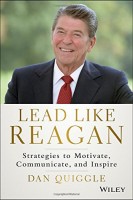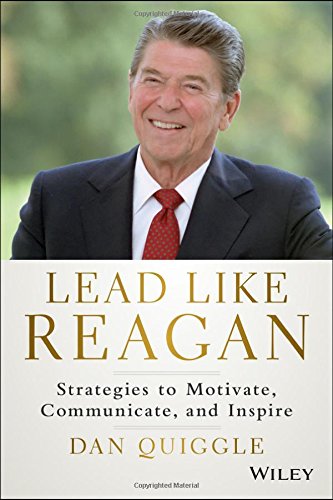 Author: Dan Quiggle
Author: Dan Quiggle
Publisher: Wiley – 162 pages
Book Review by: Sonu Chandiram
Born on February 6th, 1911, Ronald Reagan took office as President of the United States when he was nearly 70 years old on January 20th 1981. Having delivered solutions to the then-prevailing high inflation and other economic problems, the people re-elected him.
He was called the Great Communicator, but more than just being able to communicate effectively, he motivated and inspired people in general, but particularly the members of the team he built around him to accomplish the goals he set forward at the outset of his presidency, Dan Quiggle points out about Reagan in this insightful book.
We all know that it is easier to speak than to get things done. Ronald Reagan was an effective doer not just because he communicated well, but also because he was a visionary, and he set forth his vision for the people of the United States, as well as its role in the world.
Ronald Reagan accomplished much in the eight years he was President, even though his detractors have said that the positive changes that were realized in the economy were mainly due to a heavy amount of borrowing by government from the private sector. The national debt shot up dramatically in those eight years. Some have contended that it was ‘borrowed prosperity’ that Reagan brought about.
Rampant inflation prevailing before Reagan became President was controlled. He reduced the growth in government spending and cut taxes, which stimulated the economy. Job growth ensured. Among his accomplishments in foreign affairs was the improvement of the relationship between the United States and the Soviet Union.
Dan Quiggle was a college student when he joined on February 6, 1989 what he terms ‘the office of Ronald Reagan’ about a couple weeks after the end of his second term on Jan 20th of that year.
He outlines the seven component principles of leadership that Ronald Reagan lived by, which constitute the chapters of this book:
- Creating the Vision: Setting Expansive Goals
- Assembling the Team: Inspiring Loyalty and Commitment
- Communicating a Message: Connecting Others to Your Values
- Leading by Example: Using Emotional Intelligence to Model Excellence
- Taking Action: Turning Ideas Into Achievement
- Handling Crisis: Finding Opportunity in Challenges
- Changing the World: Leaving a Lasting Legacy.
Quiggle points out that the people who surrounded him felt connected to and were sincerely appreciated by President Reagan. This was one of the qualities that led to his success as a leader.
He writes: “Ronald Reagan is remembered as one of the most instinctive, intuitive, and emotionally intelligent leaders in recent history. He lived a life of impact – not only on the word stage, but also by investing personally in individuals all around him. As a result, he forever changed my life, and the lives of countless others, for the better.” Looking closely at Reagan’s style through this book will help you make a list of traits and maxims that can lead to personal growth and professional success, Quiggle points out.
This is an insightful book on Ronald Reagan’s character, values and principles that guided his life and success as a human being and as President of the United States.







